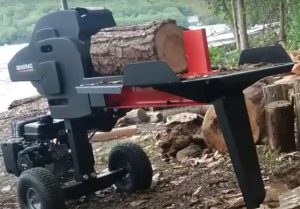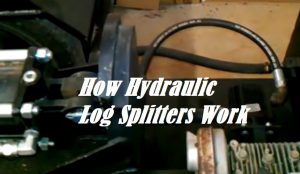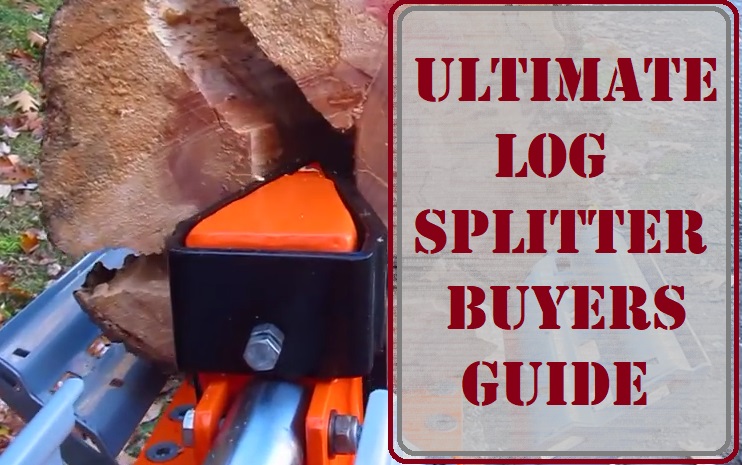I hope you love the products I've recommended below, just a heads up that as an Amazon associate, I earn from qualifying purchases. This means I may earn commissions on products bought via links on this page.
Over the years I have seen and been asked this question so many times, that I thought I should finally give a proper answer to how the hydraulics work on a log splitter. This can be a very complicated thing to explain but what I hope to achieve here today is to try and make it as simple as possible. So that first timers and veterans alike come out knowing understanding or even if you learn just something from this post, I will feel I have achieved what I set out to do today. So read on to find out exactly how the hydraulics work on a wood splitter.
The Hydraulics Of A Log Splitter Explained
There are several components on a log splitter that all work in unison to help you split your wood, all of each just as important as the last which means if one goes the whole unit will either not function, or not perform at 100%. The main important components on your log splitter will be the pump, the engine, the cylinder, the hydraulic valve, and the filter. These are your main components and are essential the brains of your log splitter, with out this key components you wouldn’t be able to split the smallest log.
From the top of the hydraulic valve you will have two two hoses coming out of the top of them, on my particular model that have part A and B written on them. For these you will have part A go to the rear of the cylinder, and part B goes to the front of the cylinder. Also attached to the hydraulic valve is a fitting at the bottom of it which is connected to the pump at the front of the unit. What happens here is the pump starts pumping and gets fluid from the tank and pumps it all the way to the fitting underneath on the valve.
If you aren’t operating the log splitter using it’s lever what will happen is the fluid will go through the hydraulic valve and through the filter, and goes through the hose and all the way back into the tank. This will keep making a constant loop until you divert it by operating the lever on the hydraulic valve either forwards or backwards. Let’s say you want it to go forwards you will push the lever forward, which will make the fluid that is doing that constant loop go up into the hydraulic valve and into the valve that I marked as A earlier.
This will then go through A which is connected to the back of the cylinder, which will push it forward. While at the same time the fluid that is at the front of the cylinder will go back through B and continue its loop. The same thing will happen when you put it into reverse, The fluid will go to B, and A will will come out and go back to the tank. So there will always be fluid going into the return line, whether you are operating in forwards or reverse or have the log splitter just idling. Whether your filling up side A or B it will be sending fluid to the piston which pushes the cylinder, which is where your power comes from.
That is all there really is to it, in terms of how do the hydraulics work on a wood splitter.So I hope I was able to explain it for you, and you have either learned something new today, or it was a helpful refresher.
Buying A Hydraulic Log Splitter
Now with a little bit more of an understanding to how the hydraulics work, I hope you have a new appreciation for the constant work horse that the log splitter is. The next tough choice you will have to make is just what is the best hydraulic log splitter is for you. This can be a tough question to answer as there so many different makes and models on the current market. But not only that do you need a 37 ton log splitter or the ever popular 5 ton log splitter, it can get so overwhelming at times. We have all been there whether its our first splitter or our tenth. This question never gets any easier in my opinion. If you want to find out just what are the best hydraulic log splitters on the market are click here to find out!
An Alternative To Hydraulic

If after reading this you think hydraulics sound like a lot of work and if one small thing goes wrong, you’re splitter will be broken and will need to be repaired or worse. Then there is an alternative on the market and that is a Kinetic log splitter. These machine operate very differently to the hydraulic units. Kinetic log splitters operate by the engine powering the fly wheels and storing a lot of energy with them, then you release the engine which splits the log in one big push, instead of the constant of a hydraulic. This makes them insanely quick compared to a hydraulic unit. A hydraulic unit on average has a cycle time between 13 seconds to 25 seconds which isn’t bad, but a kinetic averages at just 2 seconds! So if you like the sound of that then I would recommend on checking out what I consider to be the best kinetic log splitters.





